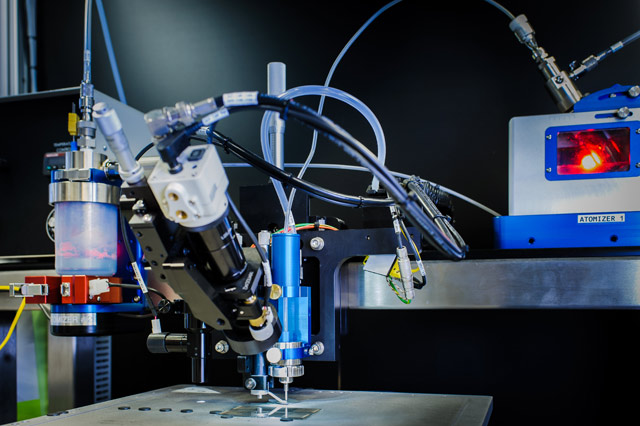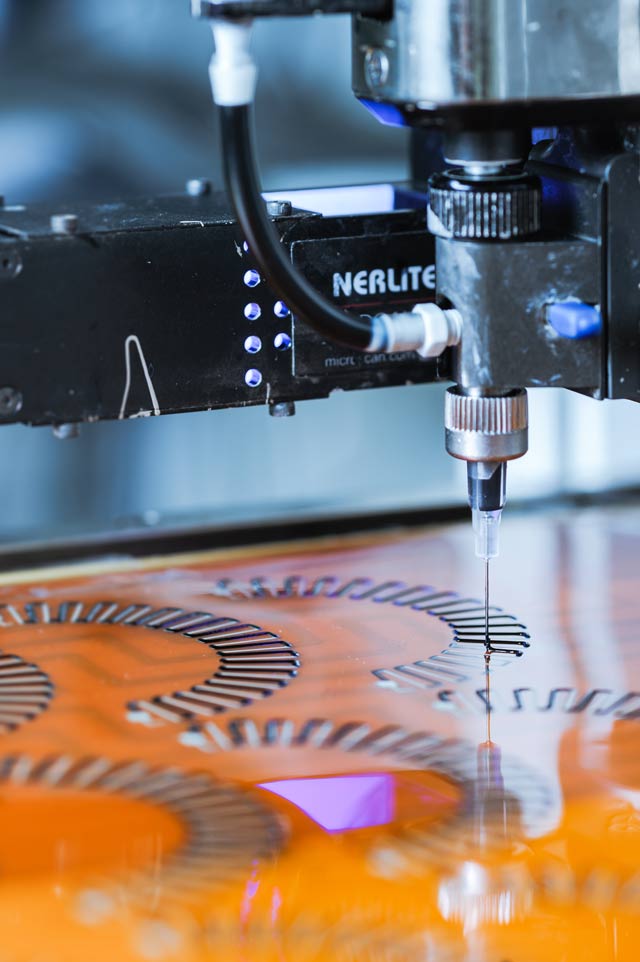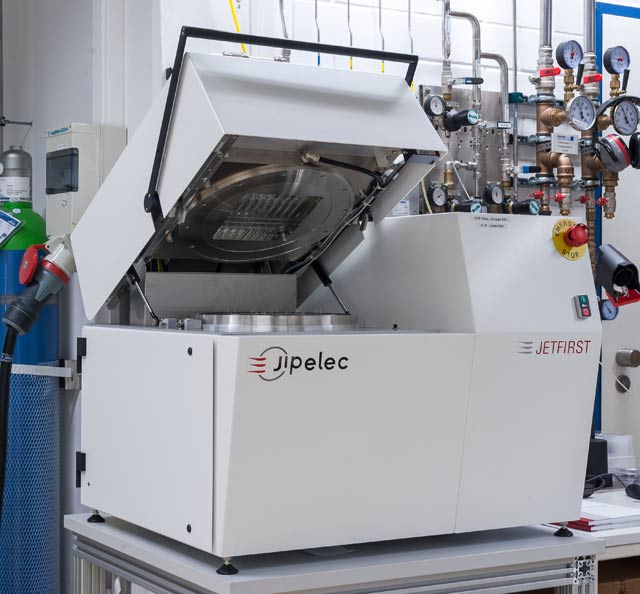Aerosol printer Aerosoljet CE 300 system (Optomec)
Aerosol printing is a novel printing technology for inks with integrated functionality and is most suitable for printing extremely thin and high resolution structures such as interconnects, contact pads, electrodes, or active functional elements (e.g. sensor elements). Minimum resolution is 10 µm. With this aerosol printer it is possible to rigidly and flexibly print without masks and in a contact-free manner on an area with a size of 300 mm x 300 mm. Due to CAD controlled data it is easy to analyze and optimize geometry variations or produce complex print images.
Advantages over ink-jet method are the opportunity of printing on uneven or bent substrates, the nearly complete material yield and a wider processing window for inks, which reduces the development work on new ink materials.
Printing method
The ink is nebulized or atomized via spray aeration or ultra-sonic and subsequently transferred into an aerosol. A carrier gas transports the aerosol through the printing head in which it is focused by a sheath gas and then lead to the substrate. The 1 – 5 µm large drops hit and moisten the substrate so that a coherent coat is formed, which is finally heat treated.
Characteristics of the aerosol jet printing system
- line width: 10 - 150 µm
- viscosity of inks: up to 1 Pa·s
- print speed: up to 200 mm/s
- distance substrate - head: 2 - 5 mm
- substrate heater: up to 150 °C
 Fraunhofer Institute for Material and Beam Technology IWS
Fraunhofer Institute for Material and Beam Technology IWS

